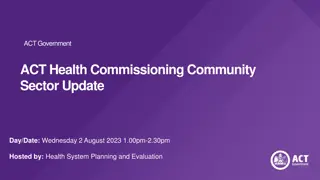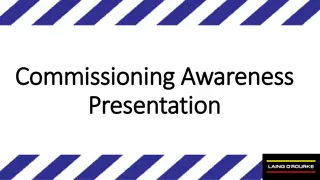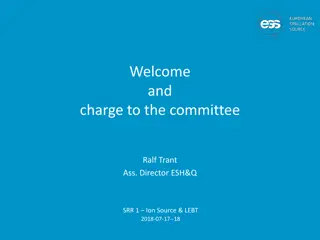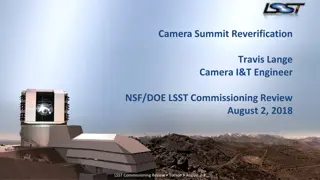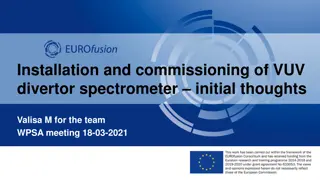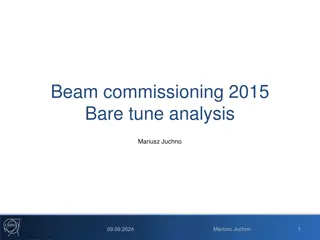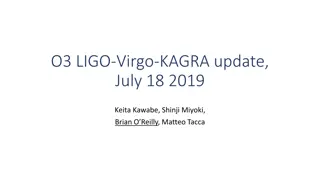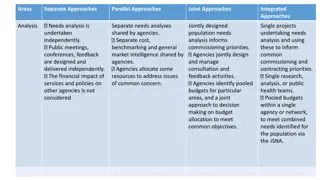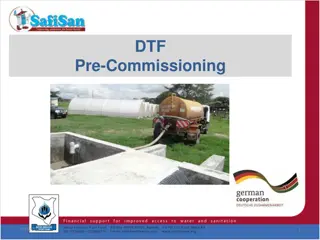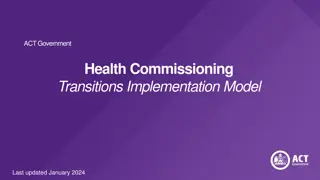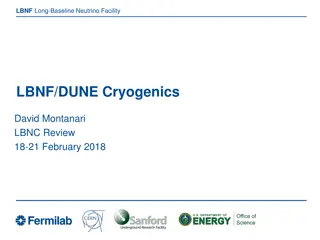
ERCOT New Part 1 Commissioning Checklist Requirements by Kelly Brink - December 2024
Ensure compliance with NPRR1212/PGRR114 for commissioning checklist requirements in ERCOT protocol before energizing resource sites consuming load other than Wholesale Storage Load (WSL) and not behind a Non-Opt-In Entity (NOIE) tie meter. Learn about obtaining Electric Service Identifier(s) (ESI.ID(s)), proper settlement processes, and more. Be prepared for ERCOT approval for initial energization of projects.
Download Presentation

Please find below an Image/Link to download the presentation.
The content on the website is provided AS IS for your information and personal use only. It may not be sold, licensed, or shared on other websites without obtaining consent from the author. If you encounter any issues during the download, it is possible that the publisher has removed the file from their server.
You are allowed to download the files provided on this website for personal or commercial use, subject to the condition that they are used lawfully. All files are the property of their respective owners.
The content on the website is provided AS IS for your information and personal use only. It may not be sold, licensed, or shared on other websites without obtaining consent from the author.
E N D
Presentation Transcript
New Part 1 Commissioning Checklist Requirement (NPRR1212/PGRR114) Kelly Brink December 2024 RMS
NPRR1212 (effective 8/1/2024) ERCOT Protocol 10.3.2(2) For a Resource site that consumes Load other than Wholesale Storage Load (WSL) and is not behind a Non-Opt-In Entity (NOIE) tie meter: (a) A Resource site may not energize until ERCOT has received an Electric Service Identifier(s) (ESI ID(s)) to be used in the generation netting process for that site, and the ESI ID has been established in the ERCOT Settlement system in a state that allows for the Load to be properly settled to the appropriate Qualified Scheduling Entity (QSE); (b) The Resource Entity must request an ESI ID(s) from the DSP(s) that will be serving the Load at the Resource site; (c) Each DSP that will be serving Load at the Resource site shall provide ERCOT and the Resource Entity with the ESI ID(s); and (d) The Resource Entity must enter the ESI ID(s) in ERCOT s Resource Integration and Ongoing Operations (RIOO) interconnection services application, or alternate application designated by ERCOT. October RIWG 2 PUBLIC
PGRR114 (effective 8/1/2024) ERCOT Planning Guide 5.5(2) Before ERCOT approves Initial Energization for a project that will consume Load other than Wholesale Storage Load (WSL) and that is not behind a Non-Opt-In Entity (NOIE) tie meter: (a) The Resource Entity must request an Electric Service Identifier(s) (ESI ID(s)) from the Distribution Service Provider(s) (DSP(s)) that will be serving the Load at the Resource site and provide the ESI ID(s) to ERCOT, as described in paragraph (2) of Protocol Section 10.3.2, ERCOT-Polled Settlement Meters; and (b) These ESI ID(s) must be established in the ERCOT Settlement system in a state that allows for the Load to be properly settled to the appropriate Qualified Scheduling Entity (QSE). October RIWG 3 PUBLIC
Impacts ERCOT Resource Integration will not grant Part 1 approval to energize unless the ERCOT Settlement System has an ESI ID associated with the generation facility. Part 1 approval allows energization of Resource Entity equipment and load to be consumed by the facility through the EPS meters. An ESI ID cannot be associated with a generation facility unless it has; An association with a Load Serving Entity (LSE) Accurate profile code elements A profile type code of BUSIDRRQ A meter type code of IDR A weather sensitivity code of NWS A time of use code of NOTOU Example profile code - BUSIDRRQ_SOUTH_IDR_NWS_NOTOU Sites that do not require an ESI ID Battery facilities where the only load flowing through the EPS meter is charging energy. WSL charging energy does not get populated into an ESI ID. Generation facilities behind a Non-Opt-In Entity (NOIE) tie meter. Since the load consumed by the facility is captured in an upstream meter, it does not need to be populated into a NOIE ESI ID. October RIWG 4 PUBLIC
Competitive Area ESI ID Create/Activate Process Competitive area ESI IDs are managed via Texas Standard Electronic Transactions (TX SET) Process Flow 1) DSP submits 814_20 to ERCOT which creates the ESI ID 2) LSE submits 814_16 to ERCOT requesting a MOVE-IN 3) ERCOT submits 814_03 to the DSP notifying them of the MOVE-IN request (sent within one hour of receipt of the 814_16) 4) DSP submits 814_04 to ERCOT acknowledging receipt of the MOVE-IN 5) ERCOT submits 814_05 to the LSE to notify them of scheduled MOVE-IN date (sent within 1 hour of receipt of the 814_04) 6) DSP submits 867_04 to ERCOT to complete the scheduled MOVE-IN (also gets forwarded to the LSE) 7) ESI ID is set to active effective on MOVE-IN date (occurs around 4 AM the day after ERCOT receives the 867_04) 8) DSP submits 814_20 to ERCOT updating the profile code 9) ERCOT associates the ESI ID to the generation facility (1-3 days after receipt of the 814_20) NOTE: Except for the last step, all ERCOT outbound transactions are 100% automated. October RIWG 5 PUBLIC
NOIE Area ESI ID Create/Activate Process 1) NOIE submits a NOIE Identification and Metering Point(s) Registration Form 2) ERCOT associates the ESI ID to the generation facility (1-3 days after receipt of the registration form) NOTE: As you can see from above, the NOIE process is much more streamlined compared to the competitive area process. October RIWG 6 PUBLIC
Issues Which Could Delay the Process Determination of DSP(s) Who will be the DSP serving the load at the facility, i.e., which DSP s certificated territory does the facility reside. In many cases the DSP is not the entity that installed the EPS meters. Multiple DSPs Some facilities, such as wind farms, span across multiple DSP certificated territories. When this occurs, the DSPs each require their own ESI ID and must work together along with the RE to determine appropriate ESI ID splitting percentages. Then, both ESI IDs must be created/activated before ERCOT can associate them to the generation facility. Workload of DSPs In the competitive areas, the ESI ID create/activate process is a highly manual process for the DSPs. There are times when the workload of the DSP is increased significantly due to circumstances such as extreme weather events. October RIWG 7 PUBLIC
Closing REs must coordinate with their LSE and the appropriate DSP to get the ESI ID created and activated. ERCOT does not have the authority to bypass these rules as spelled out in the protocols and planning guide. To avoid energization delays, ERCOT recommends the RE begin this process no later than three months prior to their anticipated energization date. October RIWG 8 PUBLIC


